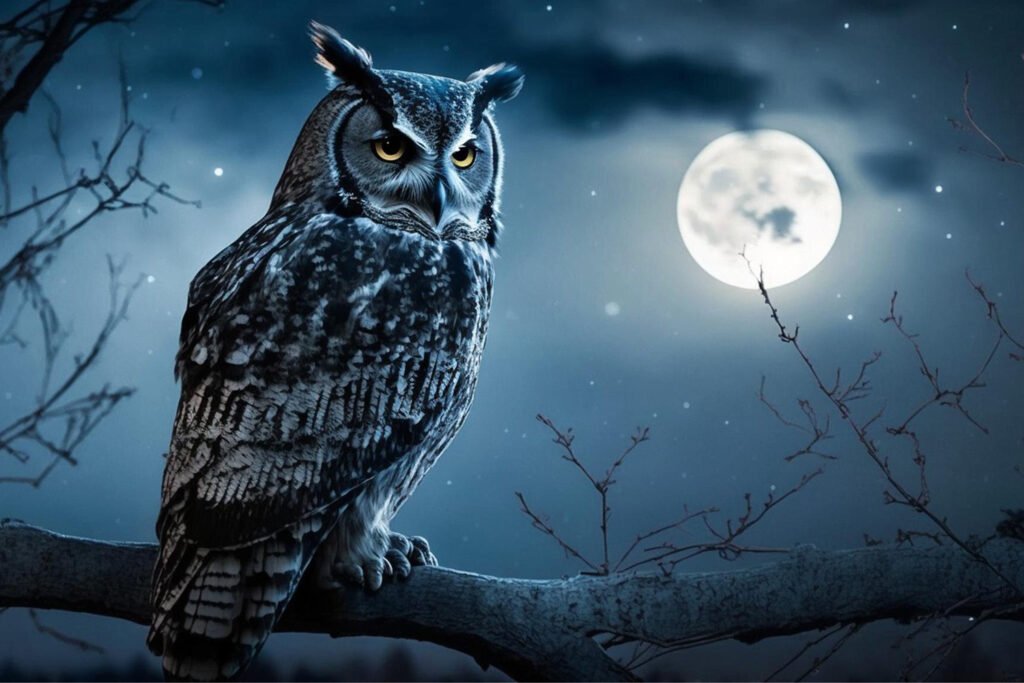Are owls nature’s silent assassins? As nocturnal predators, their hunting prowess is unmatched, captivating bird enthusiasts and casual observers alike. These fascinating creatures glide through the darkness with seamless precision, employing specialized hunting techniques that serve as a testament to their role as masters of the night. Their silent flight, an incredible adaptation, allows owls to approach unsuspecting prey with stealth. Explore the intricate details of their unique adaptations, from their acute hearing and exceptional eyesight to their crucial role in ecosystems. Join us in uncovering the mystique behind these remarkable hunters.
Owl Adaptations for Nocturnal Life
Owls’ adaptations for nocturnal life are a marvel of natural engineering. A key feature is their large, forward-facing eyes, which provide excellent depth perception and field of vision necessary for hunting in the dark. What makes owl vision so effective at night? The high concentration of rod cells in their eyes enhances their ability to detect movement and see in low-light conditions. Since their eyes are immobile, owls have developed the ability to rotate their heads up to 270 degrees. This remarkable range of motion allows them to survey their surroundings without moving their bodies, minimizing noise and remaining undetected by prey.
| Adaptation | Purpose |
|---|---|
| Large, forward-facing eyes | Enhanced depth perception and field of vision |
| High concentration of rod cells | Improved night vision |
| Head rotation up to 270 degrees | Wide field of view without body movement |
| Mottled plumage | Effective camouflage in diverse environments |
Camouflage is another vital adaptation that aids owls in their nocturnal pursuits. Many owl species possess mottled plumage that blends seamlessly with their surroundings, from the bark of trees to the leaves of the forest floor. This natural disguise is crucial for avoiding detection by both prey and potential predators. By blending into their environment, owls can perch undisturbed during the day and launch surprise attacks on unsuspecting prey at night, reinforcing their role as effective nocturnal predators.
The Cultural Significance and Symbolism of Owls
Owls have long held a prominent place in various cultures, symbolizing a range of concepts from wisdom to misfortune. In ancient Greek mythology, the owl was the emblem of Athena, the goddess of wisdom, highlighting its association with intelligence and learning. Conversely, in some cultures, owls are seen as harbingers of misfortune or death, a perception rooted in their nocturnal habits and eerie calls. Native American tribes, such as the Zuni, have historically revered owls for their silent hunting prowess, viewing them as protectors with mystical abilities. This duality in symbolism reflects the owl’s complex role in cultural narratives worldwide.
- Symbol of wisdom
- Omens of misfortune
- Revered by Native American tribes
- Featured in mythologies
- Associated with mystery and the supernatural
In modern media and folklore, owls continue to captivate the imagination, often portrayed as enigmatic and wise creatures. Their presence in popular culture, from literature to film, reinforces their mysterious aura. The enduring fascination with owls is evident in their frequent appearances in stories and artworks, where they are depicted as symbols of the supernatural and unknown. This ongoing representation highlights the owl’s enduring mystique and its ability to evoke a sense of wonder and curiosity in human culture.
Final Words
Exploring the mystique of owls as nocturnal predators reveals their remarkable hunting techniques, from silent flight to acute hearing that enables them to locate prey stealthily. Owls’ adaptations, such as asymmetrical ear placement and large, sensitive eyes, aid their successful nocturnal lifestyles.
While many cultures have admired their symbolic representations, owls face conservation challenges, highlighting the importance of ecological roles they serve.
Their communication skills further enhance their mysterious allure. Understanding these elements emphasizes the need for continued conservation efforts to protect these fascinating creatures and the balance of ecosystems they sustain.
FAQ
Is an owl a nocturnal predator?
Owls are nocturnal predators that hunt primarily during the night. They use their exceptional adaptations, such as silent flight and keen hearing, to locate and capture prey stealthily in the darkness.
What predators does the barred owl have?
Barred owls face predation primarily from larger raptors like great horned owls, which compete for territory and food. Humans altering habitats and accidental encounters with vehicles also pose risks.
What is the owl’s biggest enemy?
Owls’ biggest enemies include habitat destruction and human-related threats. This encompasses deforestation, loss of prey due to pesticide use, and collisions with man-made structures like vehicles and buildings.


